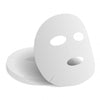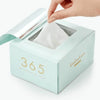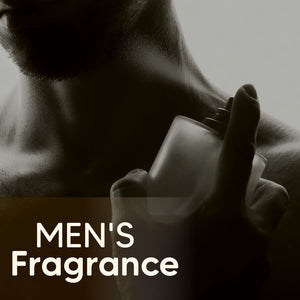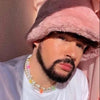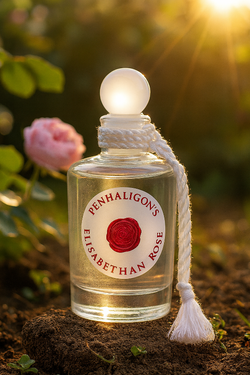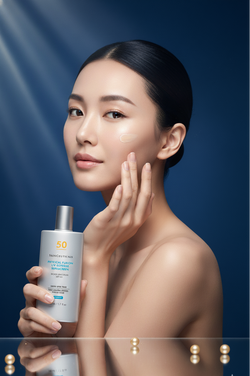[NEW] How to Get Rid of Dandruff: The Solution That Finally Worked
Every winter feels like a battle for anyone with dandruff. The air turns dry, the heating systems kick in, and what started as a few flakes becomes a constant source of embarrassment. For years, I relied on drugstore anti-dandruff shampoos that promised quick fixes but delivered only temporary relief. I remember using one popular brand before an important presentation. It worked well for about two days, but by the time I stood in front of the conference room, tiny white flakes had already reappeared on my black blazer, leaving me self-conscious and wishing the problem would just disappear.
This is exactly where understanding your scalp comes in. Instead of focusing only on killing flakes, effective dandruff treatment invests in scalp health, gentle formulations, and long-term balance. The best solutions work with your scalp rather than against it. The result is hair that breathes, a scalp that feels calm, and confidence that lasts beyond just one wash, making them perfect companions for year-round clarity.
What follows is not just a list but a guide. It's built on my own trials, advice from dermatologists, and an understanding of how modern haircare is rethinking dandruff treatment for lasting results. Solutions that stand out in 2025 are not the harshest or most chemical-heavy ones. They are smartly built, balancing active ingredients with nourishing bases that support them. Treatment works when paired with moisture, cleansing succeeds when kept gentle, and relief lasts when the scalp barrier is respected. My advice in short: choose a treatment shampoo that addresses the root cause, a maintenance routine that keeps your scalp balanced, and complementary care that supports long-term health.
Table of Contents
- 1. What Actually Causes Dandruff
- 2. The Five-Step Method That Changed Everything
- 2.1. Step 1: Pre-Wash Scalp Massage
- 2.2. Step 2: The Right Water Temperature
- 2.3. Step 3: Proper Shampoo Application
- 2.4. Step 4: Thorough Rinsing
- 2.5. Step 5: Post-Wash Care
- 3. Why I Chose SHISEIDO Fino Premium Touch Shampoo
- 4. Beyond Shampoo: Lifestyle Adjustments That Support Scalp Health
- 5. The Results: A Realistic Timeline
- 6. FAQs
- 6.1. How often should I use anti-dandruff shampoo?
- 6.2. Can I use conditioner if I have dandruff?
- 6.3. Is dandruff the same as dry scalp?
- 6.4. Will dandruff go away permanently?
- 6.5. Can diet really affect dandruff?
- 6.6. Should I see a dermatologist?
- 7. Final Thoughts
1. What Actually Causes Dandruff
 The first myth to break is that dandruff comes from poor hygiene. That was believed decades ago, but now we know dandruff stems from a combination of factors: fungal overgrowth, sebum production, and scalp sensitivity. In fact, some of the cleanest people I know struggle with persistent flakes because the real culprit isn't dirt, it's an imbalance.
The first myth to break is that dandruff comes from poor hygiene. That was believed decades ago, but now we know dandruff stems from a combination of factors: fungal overgrowth, sebum production, and scalp sensitivity. In fact, some of the cleanest people I know struggle with persistent flakes because the real culprit isn't dirt, it's an imbalance.
เดอะ fungus Malassezia lives naturally on everyone's scalp. For most people, it causes no problems. But for those prone to dandruff, this fungus feeds on scalp oils and produces oleic acid, which triggers inflammation and accelerated skin cell turnover. The result? Those visible white flakes that seem impossible to control.
Sebum production plays another role. When your scalp produces too much oil, it creates the perfect environment for Malassezia to thrive. But here's the paradox: stripping your scalp completely dry with harsh shampoos can actually trigger even more oil production, creating a vicious cycle.
I remember trying a coal tar shampoo that left my hair feeling like straw. My scalp was so dry it became itchy, and within days, the flakes returned worse than before. It felt like punishment, not treatment.
The lesson is clear: in 2025, effective dandruff treatment is not about aggression. Whether the product contains zinc pyrithione, ketoconazole, or salicylic acid matters less than how it treats your entire scalp ecosystem.
2. The Five-Step Method That Changed Everything
When I finally consulted a dermatologist, she didn't just hand me a prescription. She explained that dandruff management is a process, not a one-time fix. She outlined five steps that, when followed consistently, could transform my scalp health.
2.1. Step 1: Pre-Wash Scalp Massage
Before even wetting your hair, spend three minutes massaging your scalp with your fingertips. This loosens dead skin cells and increases blood circulation. I was skeptical at first, thinking it would make the flaking worse. Instead, it helped my scalp feel more alive, more responsive to treatment.
Some people use oils during this massage, tea tree oil, jojoba oil, or even coconut oil. I found that a dry massage worked better for my oily scalp, but the key is consistency. Three minutes, every wash, no exceptions.
2.2. Step 2: The Right Water Temperature
Hot water feels comforting, especially in winter, but it strips your scalp of natural oils. Lukewarm water is ideal for washing, and a final cool rinse helps seal the hair cuticle and calm inflammation.
I used to take scalding hot showers, believing they cleaned better. The day I switched to warm water, my scalp stopped feeling tight and irritated after washing. It was such a simple change, yet it made an enormous difference.
2.3. Step 3: Proper Shampoo Application
This is where most people go wrong. They pour shampoo directly onto their hair, scrub quickly, and rinse. But anti-dandruff shampoos need time to work. Apply the product to your scalp, not your hair length. Massage gently in circular motions, then let it sit for five full minutes. Set a timer if you need to. This contact time allows active ingredients to penetrate and address the fungal overgrowth.
When I first started leaving shampoo on for five minutes, I thought it would dry out my hair. Instead, I noticed the treatment actually worked. The flakes reduced significantly after just one week.
2.4. Step 4: Thorough Rinsing
Leftover product buildup can irritate your scalp and worsen dandruff. Rinse thoroughly, much longer than you think necessary. I spend at least two minutes rinsing, making sure no residue remains.
2.5. Step 5: Post-Wash Care
After washing, pat your hair dry instead of rubbing vigorously. Friction can irritate an already sensitive scalp. If you use a blow dryer, keep it on a cool or low heat setting. High heat can trigger more oil production and inflammation.
3. Why I Chose SHISEIDO Fino Premium Touch Shampoo
 For months, I rotated through medicated shampoos that worked but left my hair feeling lifeless. My scalp improved, but my hair looked dull, felt rough, and lost its natural shine. I started to believe I had to choose between a healthy scalp and beautiful hair.
For months, I rotated through medicated shampoos that worked but left my hair feeling lifeless. My scalp improved, but my hair looked dull, felt rough, and lost its natural shine. I started to believe I had to choose between a healthy scalp and beautiful hair.
Then I discovered SHISEIDO Fino Premium Touch Shampoo, and everything shifted.
What makes Fino different is its philosophy. Instead of viewing dandruff as an isolated problem to attack, it treats your scalp and hair as one interconnected system. The formula contains seven beauty essences and royal jelly extract, ingredients traditionally found in high-end skincare, not haircare.
The first time I used it, I noticed the texture. It felt luxurious, almost creamy, nothing like the medicinal shampoos I'd been using. I applied it to my scalp, massaged gently, and waited my five minutes. When I rinsed, my hair felt soft, not stripped. Clean, but not squeaky. It was the first time a shampoo made me feel like I was caring for my hair, not punishing it.
Within two weeks, my dandruff had noticeably reduced. But what surprised me more was that my hair looked healthier. It had shine, movement, and volume. Friends started asking if I'd changed salons or gotten a treatment. I hadn't. I'd simply found a product that understood I didn't want to sacrifice hair quality for scalp health.
The 550ml bottle lasts about three months with regular use, which makes it surprisingly economical for a premium product. The pump dispenser ensures you use the right amount every time, no waste, no guessing.
Fino works because it respects your scalp's natural barrier while gently addressing the causes of dandruff. It doesn't rely on harsh sulfates or drying agents. Instead, it cleanses with care, nourishes with intention, and delivers results that feel sustainable, not temporary.
I'm not saying it's the only solution that works. But for someone who'd tried everything from prescription treatments to natural remedies, Fino was the first product that made me feel like I could have both: a flake-free scalp and hair I was proud of.
4. Beyond Shampoo: Lifestyle Adjustments That Support Scalp Health
 Getting rid of dandruff isn't just about what you put on your hair. It's about what you put in your body and how you manage your environment.
Getting rid of dandruff isn't just about what you put on your hair. It's about what you put in your body and how you manage your environment.
- I started drinking more water. Simple, yes, but your scalp is skin, and skin needs hydration. I aimed for eight glasses a day and noticed my scalp felt less dry within a week.
- I change my pillowcase twice a week. Oils, dead skin cells, and product residue accumulate on fabric, creating a breeding ground for bacteria and fungi. Fresh pillowcases meant fewer flare-ups.
- I reduced my sugar intake. Research shows that high-sugar diets can worsen inflammation and feed fungal growth. I didn't eliminate sugar, but I became more mindful. Fewer pastries for breakfast, more whole grains and proteins.
- I managed stress differently. Stress weakens your immune system, making it harder for your body to control fungal overgrowth. I started taking short walks during lunch breaks and practiced ten minutes of deep breathing before bed. These small shifts didn't eliminate stress, but they helped my body handle it better.
5. The Results: A Realistic Timeline
Dandruff treatment isn't instant, and anyone promising overnight results is selling false hope. But with consistent effort, improvement is predictable.
- Week one: You'll notice reduced itching. Your scalp will feel calmer, less reactive. Flakes may still be visible, but the inflammation begins to settle.
- Week two: Flaking decreases noticeably. You'll find fewer white specks on your shoulders and in your hairbrush. This is when doubt might creep in, making you wonder if the improvement will last. Stay consistent.
- Week three: Your scalp feels balanced. The tightness is gone, the itching is rare, and the flakes are minimal. You'll start to trust the process.
- Week six: Dandruff becomes a background concern, not a daily worry. You stop checking your shoulders compulsively. You wear dark colors without anxiety. Your hair looks healthier, shinier, more alive.
By three months, if you've maintained your routine, dandruff is either completely gone or so minimal it doesn't affect your life. You've built a sustainable system that works.
6. FAQs
6.1. How often should I use anti-dandruff shampoo?
Start with every wash, typically two to three times per week. Once your dandruff improves, you can alternate with a gentle, hydrating shampoo to maintain balance without over-treating.
6.2. Can I use conditioner if I have dandruff?
Yes, but apply it only to your hair lengths and ends, never directly on your scalp. Scalp application can clog pores and worsen flaking.
6.3. Is dandruff the same as dry scalp?
No. Dandruff produces oily, yellowish flakes caused by fungal overgrowth. Dry scalp produces small, white flakes from a lack of moisture. Treatments differ, so correct diagnosis matters.
6.4. Will dandruff go away permanently?
Dandruff is manageable but often chronic. With the right routine, you can keep it under control indefinitely, but stopping treatment may cause it to return.
6.5. Can diet really affect dandruff?
Yes. Diets high in sugar and unhealthy fats can increase inflammation and sebum production, worsening dandruff. Omega-3 fatty acids, zinc, and B vitamins support scalp health.
6.6. Should I see a dermatologist?
If over-the-counter treatments don't work after six weeks, or if you experience severe itching, redness, or hair loss, consult a dermatologist. You may need prescription-strength treatment.
7. Final Thoughts
Getting rid of dandruff in 2025 is not about finding the harshest treatment and hoping for the best. It is about intelligent care: products that balance effectiveness with gentleness, routines that support long-term health, and lifestyle choices that address root causes.
Modern solutions like SHISEIDO Fino Premium Touch Shampoo are leading the way, combining active care with nourishing ingredients, turning scalp treatment into an experience of luxury rather than punishment.
For me, Fino transformed not just my scalp but my confidence. It gave me the freedom to wear what I want, style my hair without fear, and show up fully without the constant worry of white flakes giving me away.
When I look back on the years I spent hiding, checking mirrors, brushing my shoulders every few minutes, I realize the best solutions are not just functional. They become part of your self-care ritual, woven into mornings that feel calm, evenings that feel restorative, and days that feel unrestricted. That's the real beauty of effective dandruff care in 2025.
7.1. How to Get Rid of Dandruff — The Solution That Finally Worked
Summary: Discover the proven method that finally worked to eliminate dandruff for good. Learn what causes dandruff, which remedies actually help, and how to build a scalp-care routine that stops flakes and itchiness permanently.
In this article, we explore real-life solutions that finally worked to eliminate dandruff. We look at causes, effective routines, natural remedies, and why many treatments fail.
*The content displayed on the lmching.com website is provided solely for informational purposes. We sincerely value your visit to our website.
สมาชิกบรรณาธิการของเรา
พบกับผู้เชี่ยวชาญเบื้องหลังบล็อกของเรา!










